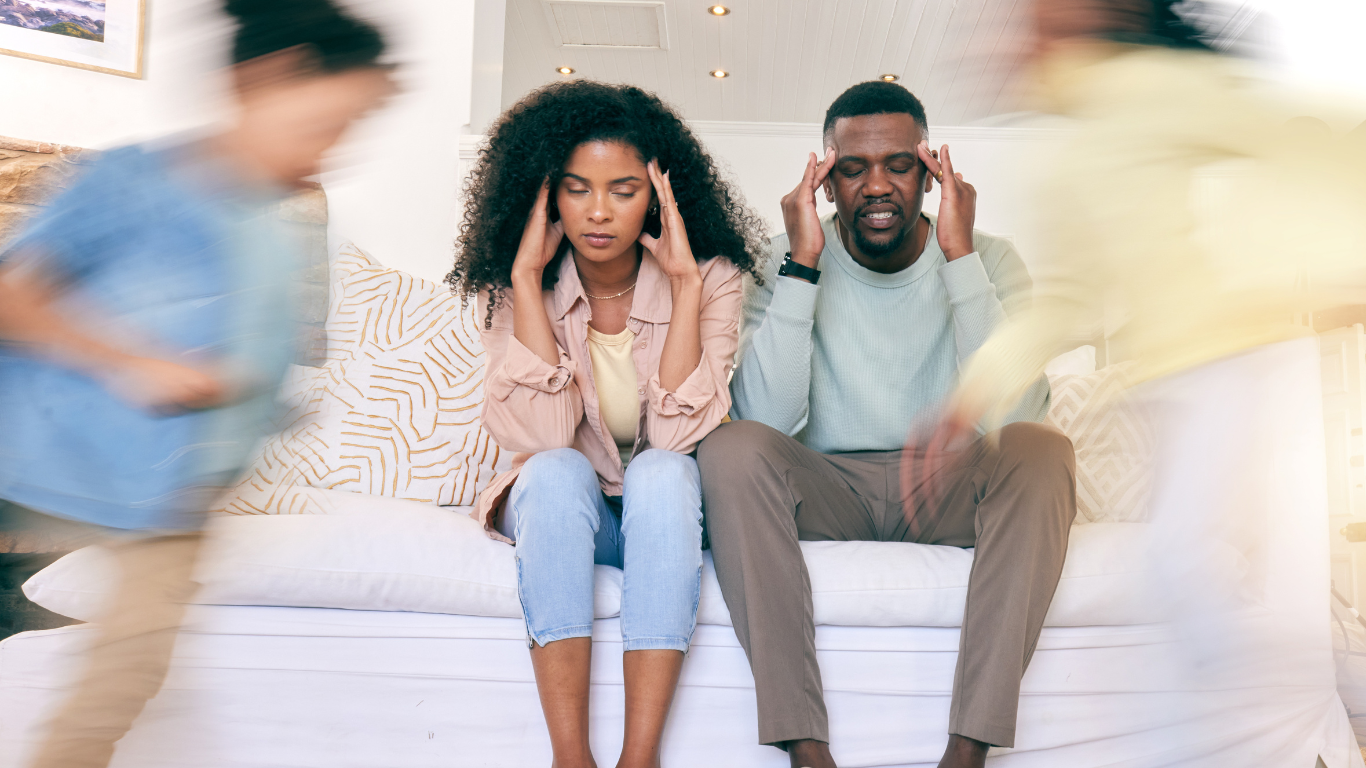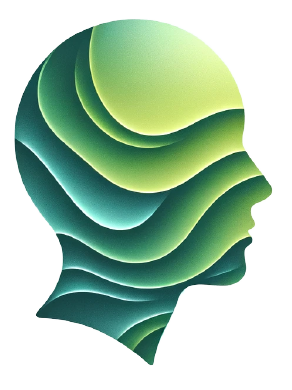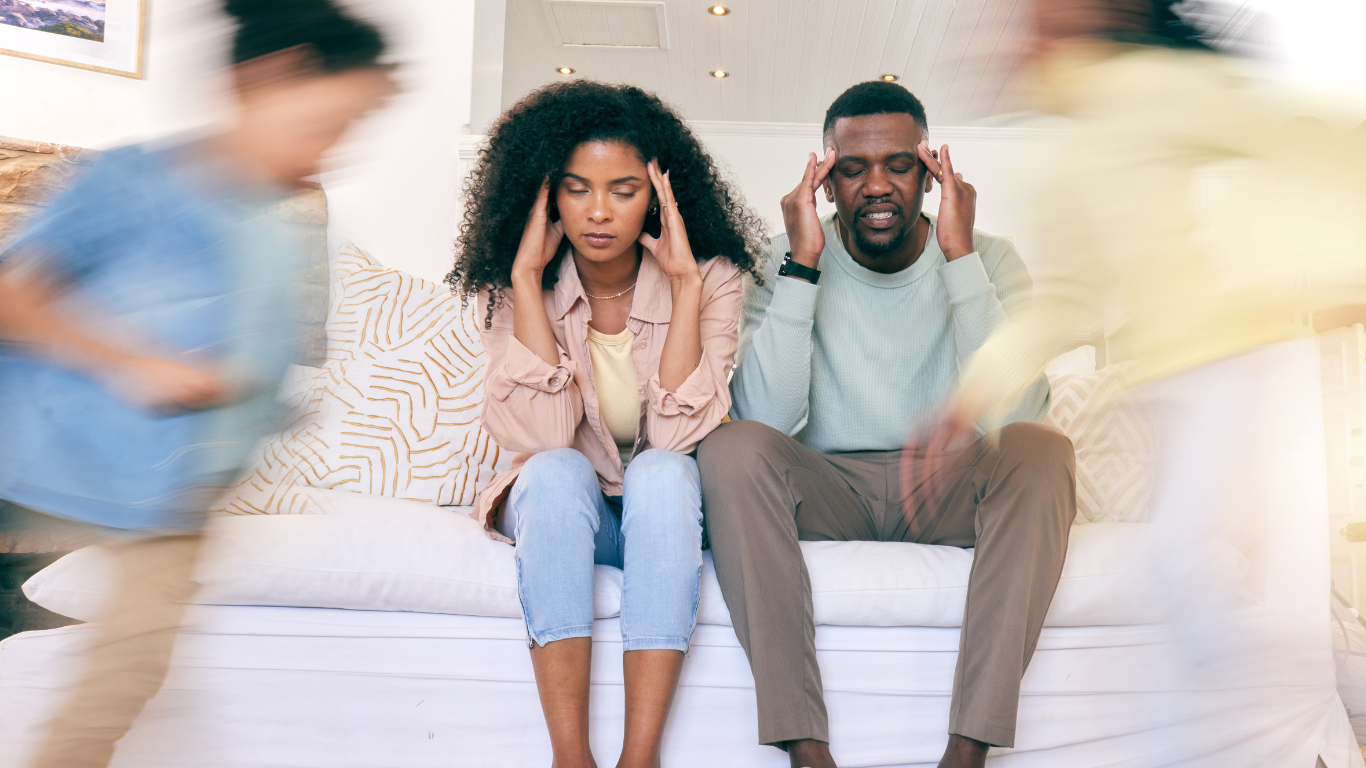Migraine with Aura: How to reduce daily impact and long-term health risks.


About 70 percent of people seeking treatment for chronic migraine do not experience aura.¹ But for those who do, migraines with aura can be even more disruptive to daily life.
They also come with added concerns: research indicates migraine with aura increases stroke risk as well as risk of seizures, brain lesions, blood clots and heart attacks. Women who suffer migraines with aura are particularly at risk. They are also more likely to die from these risks that people who don’t suffer migraines with aura.
Let’s look closer at migraine auras and ways to reduce the frequency of attacks — and the potential impact on health.
Key takeaways
- Research shows a link between migraines and greater risk of other health issues, including stroke and brain damage.
- With aura migraines, the risk is even higher.
- Minimizing that risk requires a heart-healthy migraine prevention strategy that emphasizes natural options for building resilience.
What is chronic migraine with aura?
The ICD 10 is the international reference physicians use to code each diagnosis they make. The ICD 10 code for migraine with aura defines “aura” as neurological symptoms that precede or accompany the headache. Aura may include a combination of sensory disturbances, such as hallucinations and difficulty in concentrating and speaking. Aura is usually followed by features of the common migraine, like pain, nausea and sensitivity to light and sound.²
Common migraine with aura symptoms
- Blind spots (scotomas), sometimes outlined by geometric designs
- Zigzag lines floating across your field of vision
- Shimmering spots or stars
- Changes in vision or vision loss
- Flashes of light
- Ringing in the ears
- Hearing music
- Tingling or numbness of the hands or face
- Vertigo
Migraine aura usually occurs within an hour before head pain begins and generally lasts less than 60 minutes. Sometimes migraine aura occurs without headache, especially in people aged 50 and older.
Women are three times more likely to have migraines than men. Interestingly, men who do experience chronic attacks are more likely to experience migraine with aura than women who have migraine.³
Research has identified hormonal changes as migraine with aura triggers for both men and women. With women, changes in estrogen are associated with greater frequency and intensity of migraines. For women, these can include:
- Menstrual cycles
- Pregnancy
- Puberty
- Menopause
In men who experience migraines, researchers have noted higher levels of estrogen as well as testosterone deficiency compared with men who do not. Migraines with aura typically fall into three categories:
- Visual/ocular migraine with aura: The most common type of aura is visual, which occurs when a wave of electrical activity spreads through the visual cortex and causes symptoms. If the vision problem is in one eye, then it is an ocular migraine with aura. If it is in both eyes, it is a visual migraine with aura.
- Hemiplegic migraine with aura: Migraine sufferers may experience this type of aura as temporary weakness on one side of their body, often occurring with changes in vision or speech.
- Migraine with brainstem aura (MBA): This type of aura produces head pain in the back and on both sides. Warning signs can include slurred speech, dizziness, and loss of balance.
What causes the actual aura itself?
According to the Mayo Clinic, there is evidence that migraine aura is caused by an electrical or chemical wave that moves across the brain. The part of the brain where the electrical or chemical wave spreads determines the type of aura symptoms migraine sufferers might experience. This electrical or chemical wave can occur in areas that process sensory signals, speech centers, or centers that control movement.
Patients with migraines show cortical spreading depression (CSD) which is characterized by dramatic waves of activity that spread across the surface of the brain. CSD may in turn trigger not only the pain of migraine but the aura and nausea of the migraine as well. Serotonin and dopamine may also play a role in chronic migraine with aura. So may deficiencies of vitamins and minerals like Vitamin B2 (riboflavin), magnesium, and CoQ10.
What causes this aura “wave?”
The aura — and the nausea and pain of the migraine itself — may begin with brain excitability. Stress, bright lights, irregular sleep patterns, certain foods and beverages, changes in the weather, vitamin deficiencies, and menstruation are commonly reported migraine triggers. These factors are also associated with triggering chronic migraines with aura.
These triggers may spark physiological changes that disrupt brain cells’ normal energy production leading to the spasming of blood vessels. Neurons also release norepinephrine and calcitonin gene-related peptide (CGRP) that act on blood vessels.
Elit nisi in eleifend sed nisi. Pulvinar at orci, proin imperdiet commodo consectetur convallis risus. Sed condimentum enim dignissim adipiscing faucibus consequat, urna. Viverra purus et erat auctor aliquam. Risus, volutpat vulputate posuere purus sit congue convallis aliquet.
Migraine auras and potential cardiovascular and brain risks
Migraine with aura symptoms and symptoms of stroke may be similar but migraine with aura and stroke are two different conditions. Suffering an attack doesn’t mean you’re having a stroke or are about to have one. However, according to the Stroke Association, if you have migraine with aura you are about twice as likely to have an ischemic stroke in your lifetime compared to those without migraine with aura.
While both men and women experience migraines with aura, research has largely focused on women because migraines are three times more prevalent in women than men.
An example of this growing body of research includes studies that investigate aura migraines’ stroke risk, heart attacks, and blood clots in women who take combination hormonal contraceptives. The size of the studies makes this research of particular importance. Let’s look closer.
The first study used data collected as part of the ongoing Women’s Health Study involving close to 28,000 women over 15 years. The second study identified approximately 115,000 women who had used combined hormonal birth control pills during an 11 year period. Here is a quick summary of the findings from these studies on migraines with aura:
- Cardiovascular risks: Among middle-aged and older women, migraine with aura stroke risk (and other cardiovascular events) is higher. Having migraines with aura proved more of a risk factor than having a family history of early heart disease, having diabetes, or being obese or a smoker.
- Blood clots: For women who suffer migraines with aura, birth control is also a concern: use of combined hormonal contraceptives were found to have a higher risk for dangerous deep vein thrombosis (DVT) and blood clots. The risk was even higher for women suffering from migraines with aura.
- Brain lesions (damaged tissue): In addition to the link between aura migraines and cardiovascular problems, an additional study found that women who suffer migraines with auras have twice the risk of developing lesions in their brain later in life.
- Pregnancy outcomes: In women who suffer migraine with aura, pregnancy complications are more likely. There is also a consistent link between pregnancy migraine aura and stroke.
“We have known that migraine with aura is associated with risk. The research shows just how big the risk is.” — Noah Rosen, MD, Neurologist and Migraine Specialist
Reducing migraine with aura and related risks
Migraine and migraine with aura treatments are largely the same. With aura migraines, however, it’s important to focus on reducing the frequency and intensity of the attacks and to reduce your risk of developing cardiovascular problems.
This dual approach to migraine with aura treatment has its challenges. For example, painkillers like ibuprofen and naproxen can help relieve migraine — but they can also increase the risk of a heart attack or stroke. Statins can reduce cholesterol — but they also reduce your natural CoQ10 levels which can have a negative impact on brain health.
For example, women who have migraine with aura should avoid combination birth control pills that contain estrogen because these may increase stroke risk.
Because of these challenges, a prevention plan that emphasizes natural options can provide the best of both worlds: fewer migraines with aura and reduced neurological and cardiovascular risks.
Keys to a prevention strategy that focuses on reducing migraines with aura and keeping your heart and brain healthy
- Discuss your aura symptoms so your doctor can make sure there is no underlying cause that needs to be treated.
- If you use contraceptives or hormone replacement therapy (HRT), make sure your doctor knows you experience migraines with aura. Taking the combined hormonal birth control pill increases the risk of a stroke in women who have migraine with aura. Because of this, women who have migraine with aura are not usually given this type of contraceptive. If you have migraine without aura, you should be able to take it unless you have other risk factors like smoking or being overweight.
- HRT is effective at controlling menopause symptoms and might help reduce the likelihood of migraine with aura. It is not, however, an effective migraine treatment. Further, if started too early when estrogen levels can fluctuate widely, the addition of HRT can worsen migraine. Amounts of estrogen vary between different HRTs, so work with your doctor to find your best option.
- If you take statins, think about adding more CoQ10. Statin brands like Lipitor®, Zocor®, Crestor®, and others are excellent for lowering harmful cholesterol. They also block the synthesis of Co-enzyme Q10 (CoQ10).
- CoQ10—an antioxidant—is vital in supporting biochemical reactions that produce energy and manage the utilization of oxygen inside every cell in our body. We know that nutritional deficiencies that disrupt energy metabolism seem to trigger migraines with aura, so anything that blocks the synthesis of CoQ10 is of concern.
- Using CoQ10 supplements has been shown beneficial for heart health. Studies have also shown CoQ10 can be effective as a migraine preventative. That’s a double benefit! High-potency CoQ10 can be found, for example, as an ingredient in the dietary supplement Dolovent™, which doctors often recommend to their migraine-with-aura patients.
- Pay attention to your diet. Eat regularly to avoid spikes and drops in blood pressure, which can launch migraines. Trade migraine-trigger foods filled with preservatives, fat, and empty calories for lean, plant-rich meals. In addition, increase your uptake of key brain and heart nutrients. Magnesium and Vitamin B2 are at the top of the list since research has linked deficiencies with migraine. With aura, these nutrients can be even more important since they help normalize the “excitable brain activity” that can trigger symptoms.
- According to Cleveland Clinic cardiologist Dr. Tamanna Singh, magnesium is also important for heart health: “Magnesium is an electrolyte that helps to regulate your heart rate. When you have a deficiency of electrolytes it can make your heart speed up.”
- WebMD offers this advice from Atlanta neurologist and migraine specialist Dr. Sarah DeRossett: “I recommend [supplements for preventing migraine] if there are at least two well-controlled clinical trials showing benefit. Magnesium, riboflavin (vitamin B-2), and Co-enzyme Q10 all fit those criteria.” Dolovent mentioned above includes all three nutrients plus additional migraine-focused minerals and antioxidants.
- Head off migraines before you need a painkiller for the attack. Reducing the frequency and intensity of attacks reduces the need for painkillers. That’s good news for heart health since taking ibuprofen or any other NSAID can increase your risk of heart attack or stroke. It happens quickly, even with short-term use — even within a few weeks of starting to take an NSAID.
- Migraine pain can also lead to Medication Overuse Headache (MOH), which paves the way for greater cardiovascular risk and more migraines. Overuse of painkillers (and even medications like triptans) causes a disorder where your body becomes dependent on the medication. Trying to lower your intake triggers withdrawal symptoms, including migraines with aura.
- MOH is one of the reasons neurologists and other doctors give migraine prevention such a high top priority: The fewer migraines you have, the less painkillers are needed.
- Remember to explore natural migraine prevention as well as medications. Even members of the American Academy of Neurologists recognize several supplements as being effective in reducing the frequency and severity of painful episodes.
- One of the best documented natural options for preventing migraines with aura is Petadolex, a patented form of butterbur with high concentrations of active ingredients. Butterbur is generally safe for short-term use, but it’s crucial to choose a supplement (like the patented butterbur extract) that is labeled “PA-free” to avoid any potentially harmful pyrrolizidine alkaloids that occur in natural butterbur. The supplement has few drug interactions, comes in easy-to-swallow capsules, and is comparable to the effectiveness of new cGRP migraine prevention injections.
Whether you are male or female, if you experience migraines with aura, talk to your doctor. Discuss your own risk factors for heart attack, stroke, and pregnancy complications. It’s also important to discuss preventing migraine with aura, including natural options like Petadolex and Dolovent that compare to the effectiveness of prescription medications.
Quellen
-
Shankar Kikkeri, N., & Nagalli, S. (n.d.). Migraine With Aura. National Library of Medicine. https://www.ncbi.nlm.nih.gov/books/NBK554611/
-
(2004). International classification of headache disorders, 2nd ed. https://www.icd10data.com/ICD10CM/Codes/G00-G99/G40-G47/G43-/G43.109
-
(2021, May 17). What Can Cause a Sudden Increase in Migraine Attacks with Aura? Healthline. https://www.healthline.com/health/migraine/sudden-increase-in-migraines-with-aura
-
Van Oosterhout, W., & Schoonman, G. (2019). Female sex hormones in men with migraine. Neurology, 91(4), e374-e381. https://doi.org/10.1212/WNL.0000000000005855
-
(2021, July 2). Migraine With Aura. Mayo Clinic. Retrieved February 14, 2024, from https://www.mayoclinic.org/diseases-conditions/migraine-with-aura/symptoms-causes/syc-20352072
-
UCLA (n.d.). Why Women Get More Migraines Than Men. UCLA Health. https://www.uclahealth.org/news/why-women-get-more-migraines-than-men#:~:text=Patients%20with%20migraines%20show%20cortical,so%20common%20in%20migraine%20patients.
-
Jacobs, B., & Dussor, G. (2021, July 2). Neurovascular contributions to migraine: Moving beyond vasodilation. National Library of Medicine. Retrieved February 14, 2024, from doi: 10.1016/j.neuroscience.2016.06.012
-
Stroke Association (n.d.). Migraine and Stroke. https://www.stroke.org.uk/what-is-stroke/are-you-at-risk-of-stroke/migraines-and-stroke
-
Schurks, M., & Buring, J. (n.d.). Migraine, Migraine Features, and Cardiovascular Disease. Headache. 2010 Jun 1; 50(6): 1031–1040. https://www.ncbi.nlm.nih.gov/pmc/articles/PMC2891199/
-
Migraine and risk of cardiovascular disease in women: prospective cohort study BMJ 2016; 353 doi: https://doi.org/10.1136/bmj.i2610
-
Kruit, M., & Van Buchem, M. (2010). Migraine is associated with an increased risk of deep white matter lesions, subclinical posterior circulation infarcts and brain iron accumulation. Cephalalgia, Feb(30(2)), 129-136. https://doi.org/ 10.1111/j.1468-2982.2009.01904.x
-
(2023, February 1). Migraine history may be marker of pregnancy complications. Harvard Gazette. https://doi.org/10.1212/WNL.0000000000206831
-
Women’s Health Concern (n.d.). FACT SHEET: HRT and Migraines. https://www.womens-health-concern.org/wp-content/uploads/2023/11/18-WHC-FACTSHEET-Migraine-and-HRT-NOV2023-B.pdf .
-
Cleveland Clinic (n.d.). Why Magnesium May Help Your Heart Palpitations. Health Essentials. https://health.clevelandclinic.org/magnesium-for-heart-palpitations
Popular articles



